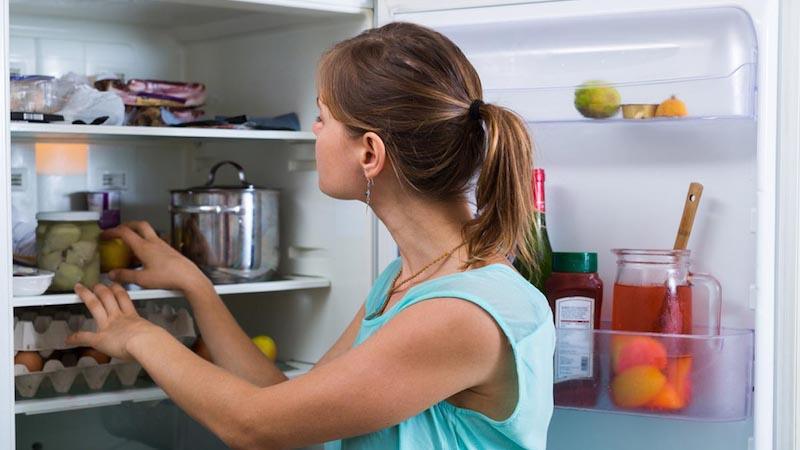Spring is finally here! Flowers are blooming and trees are unfurling their leaves. A long winter has passed and hopefully the end of the COVID-19 pandemic is in sight. As we put away our boots and winter coats and tackle spring cleaning chores, consider using this time to tackle and maybe refresh your diabetes management plan.
Reorganize diabetes supplies
Having the right supplies on hand can save you a late-night trip to the pharmacy and make it easier to stay on top of your diabetes.
Meters
Today’s blood glucose meters have come a long way: they’re small, easy to use, require less blood and give glucose results in seconds. Some meters even wirelessly transmit glucose readings to a smartphone app.
- Clean out old meters that might be gathering dust in a drawer or closet. While you might want to keep an extra meter as a back-up, you should make sure that the meter is working and that you have the appropriate test strips to use with it.
- Is it time for a new meter? Meters can last several years, but if you’re getting questionable results, you may need a new one.
- Check with your health plan about which meter(s) they cover. Remember that test strips can be costly, so it’s worthwhile looking into meters suggested by your plan. If cost remains an issue, look into store-brand meters from pharmacies, such as Walgreens or Walmart.
Test strips
- Be sure to check the expiration date on your test strips. The Food and Drug Administration (FDA) and meter manufacturers advise against using expired test strips as you can get inaccurate results which, in turn, could pose a risk to your health.
- You may also need to toss test strips that have been left in a cold car or garage all winter (hot temperatures can render test strips ineffective or inaccurate, too).
- Using control solution specifically for your brand of meter is a good way to check how your meter and test strips are working. Control solution is a liquid that contains glucose, water and other ingredients, and has a pH that mimics that of blood. Contact the meter manufacturer about purchasing control solution, or check with your local pharmacy to find out if they keep it in stock (the pharmacy may also be able to order it for you).
- Keep test strips at room temperature, away from humidity (keep them out of your bathroom) and sunlight.
Ketone strips
- Like test strips, ketone strips have an expiration date. In general, ketone strips expire within three to six months of opening.
- As with test strips, keep ketone strips in a cool dry place, away from moisture, sunlight and heat.
- Along with meters, test strips and ketone strips, you might also have CGM supplies (e.g., sensors and transmitters) and/or insulin pump supplies (e.g., infusion sets, pods) that have an expiration date, as well. Double check expiration dates on all of these supplies. And don’t forget to check batteries!
To get cutting-edge diabetes news, strategies for blood glucose management, nutrition tips, healthy recipes, and more delivered straight to your inbox, sign up for our free newsletter!
Medications
- Keep unopened insulin vials or pens in the fridge. Always keep insulin away from heat and sunlight.
- Remember that insulin expires. In fact, there are two expiration dates for insulin: There’s an expiration date printed on the insulin bottle or pen, which is one year after the purchase date. The other expiration date is usually 28 days after you’ve started to use, or opened, the insulin pen or bottle. While it can be tempting to use expired insulin to avoid waste, it’s highly recommended not to do this, as insulin will start to degrade, or break down. Using expired insulin may lead to high (and possibly dangerously high) blood glucose levels.
- To keep track of expiration dates once you’ve started using your insulin pen or bottle, write the expiration date on the pen or vial to remind you when to start using a new pen or vial.
- Go through all of your other medications, including those bottles tucked away at the back of your medicine cabinet. However, if any have expired or you no longer use them, don’t be too quick to flush them down the toilet. The FDA has a list of medicines that are safe to flush. For medicines not on the list, see if there are drug take-back locations near you or read how to safely dispose of them at home.
- If you tend to forget to take your medications, purchase a pillbox or try a medication reminder app for your smartphone. Check out options here for both iOS and Android users.
If you have unused diabetes supplies and medicines that haven’t expired, consider donating them. Contact the following organizations for more information and to find out what each will or will not accept:
- An American Diabetes Association office in your state
- A JDRF Chapter in or near your state
- Insulin for Life
- CR3 Diabetes Association
- Integrated Diabetes Services (call 877-735-3648)
Reorganize your kitchen
There’s something very satisfying about cleaning out your fridge and tossing old, stale food from your cupboards. Holiday cookies from December still lying around? Toss. Expired milk or yogurt languishing in the fridge? Toss. Moldy or rotting vegetables in the crisper drawer? Toss or compost. Setting up your kitchen not only helps you feel better, it can help you eat healthier, too.
- Do a deep clean. Empty out your fridge. Clean the shelves and drawers with hot, soapy water. You can sanitize your fridge with a solution of one tablespoon of bleach added to a gallon of water. Dry everything with a clean towel.
- Store produce in reusable produce bags or containers with a lid to keep out moisture and protect against ethylene gas, which speeds up ripening.
- Clean out your cupboards or pantry shelves (yes, that means taking everything out!). Throw out anything that’s stale or expired. And if sweet or salty snacks are your downfall, consider tossing those, too, or, if unopened, donating to a local food pantry.
- Invest in food storage containers that fit on your shelves. These are perfect if space is tight, and will keep food fresher, longer (plus, they can help keep out pesky critters, too!).
- If eating healthier is a goal you’d like to work on, decide what utensils or equipment you might need (think knives, a blender, an Instant Pot, etc.). Donate equipment that you never use.
Along with cleaning out, think about some healthy eating goals for the warmer weather. It’s hard to commit to eating more fruits and vegetables if you don’t have any in your fridge. Make a list of foods that you want to eat on a regular basis. Take stock of your pantry and make a point to keep staples on hand so that you can easily put together a healthy meal at a moment’s notice. Stock up, too, on healthy snacks: nuts, seeds, yogurt, whole-grain crackers, cheese sticks and popcorn are great choices. Need help with your shopping list and meal planning? There’s an app for that — actually, many apps. Try Mealime, Yummly, Shopping List, Grocery Gadget, AnyList or Out of Milk.
Dust off your activity plan
- Spring is a great time to spruce up your physical activity plan — or to start something new. If you’re not physically active now, use this time to think about what you might try, such as walking, swimming or taking an online class. Getting outside and enjoying the sunshine is a perfect way to start moving more.
- Check with your healthcare provider if you’re looking to start a new activity program (other than light walking) to make sure it’s safe for you and if you need to adjust any of your diabetes medicines.
- Invest in the right equipment. This might mean buy a new pair of sneakers or walking shoes that are best suited for your feet (don’t forget the right socks, too), comfortable workout clothes, resistance bands, hand weights, a water bottle, etc.
- Stock up on treatment for low blood sugar such as glucose tabs, glucose gel or juice boxes.
Clean up your appointment calendar
Having diabetes can mean a lot of appointments — from regular medical visits, to sessions with a dietitian or diabetes educator, to eye exams, to appointments with specialists…the list can seem endless. How do you stay organized?
- Get your appointments scheduled. Devote some time in your day to schedule any appointments that you are due (or overdue) for. If it works out, try to book several appointments in one day.
- If you’re prone to cancelling appointments due to work or other commitments, try to book appointments early in the day, and if possible, avoid appointments during rush hour.
- Many provider offices have been offering telemedicine (video) visits, thanks to the pandemic. Take advantage of them if they’re appropriate for your type of appointment.
- Use a system to remind you, whether it’s a calendar that you hang on your kitchen door or a phone app (try Cozi) or sign up for automated text messages or phone calls from your provider’s office.
- Make a list of any questions that you have so that you’ll be prepared for your appointment.
- If you have questions that you forget to ask during your visit, see if your provider’s office has an online health portal that allows you to send a message to your provider.
Want more tips you for improving your diabetes management routine? Read “Take Five for Better Health.”





